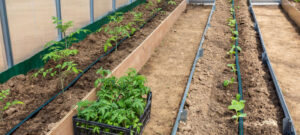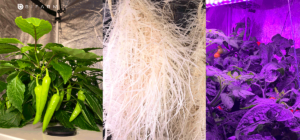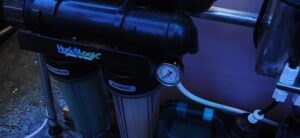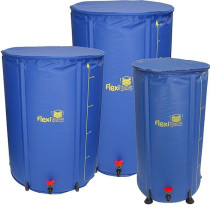What is a hydroponic nutrient reservoir?
The hydroponic reservoir tank is the backbone of any hydroponic system. After all, it’s holding and circulating the very life-blood of your hydroponic garden - the hydroponic nutrient solution.
The hydroponic reservoir does more than just hold nutrients and water. The reservoir houses the water pump, an air stone or diffuser, and sometimes a lid or cover to prevent contaminants from entering the nutrient solution.
How big should my hydroponic reservoir be?
Like with many aspects of hydroponic gardening, it is encouraged to size up on your system, as to ensure you can adequately feed your entire grow room.
Common sizes of hydroponic water reservoirs:
- 10 gallon hydroponic reservoirs
- 20 gallon hydroponic reservoirs
- 30 gallon hydroponic reservoirs
- 40 gallon hydroponic reservoirs
- 50 gallon hydroponic reservoirs
- 60 gallon hydroponic reservoirs
- 70 gallon hydroponic reservoirs
- 100 gallon hydroponic reservoirs
- 200+ gallon hydroponic reservoirs
Plants require oxygen so don’t skimp on aeration.
Dissolved oxygen is extremely important for plant health, and the way to attain this is to continually aerate the mixture in the hydroponic tanks. The most common method for increasing oxygen levels is powered aeration with air pumps and air stones. Good aeration promotes nutrient uptake and aids in the growth of beneficial organisms.
What is the best temperature for a hydroponic reservoir?
Plants have a very specific temperature range they perform best in. If the temperature is too low, plants will think the season is ending and will stop growing. If the temperature rises too high, plants will be unable to hold onto oxygen and growth will slow.
Keep the nutrient solution in the reservoir between 65-75 degrees Fahrenheit.
In any hydroponic tank or reservoir you’re going to have to constantly monitor the temperature to maintain a safe level for plant growth and health. During the summer months, you will need to use a water chiller, and during the winter months, a reservoir water heater will need to be used to keep a balanced, constant temperature.
Hydroponic Reservoir Maintenance
You'll need to put an emphasis on maintaining your hydroponic if you want to keep your garden in top shape. This goes beyond simply topping off the hydroponic reservoir from time to time.
You'll need to change the water out completely from time to time to keep everything fresh. Another responsibility of maintaining your reservoir is testing the pH and PPM or EC consistently. If your reservoir falls out of whack, your plants will suffer.
Using a a href="https://hydrobuilder.com/garden-care-pest-control/grow-room-meters-and-testing-supplies/nutrient-dosers.html"target="_blank">Nutrient and pH autodoser will control this for you, preventing you from having to do it manually. These are especially useful in commercial hydroponics.
If you want to learn more about hydroponics, be sure to visit our blog. If you have any other questions give us a call at 888-815-9763 and let one of our experienced growers help you today!





